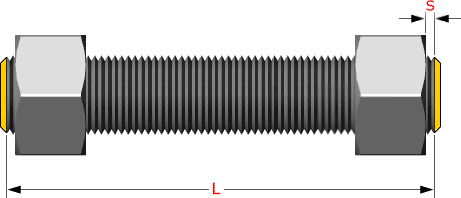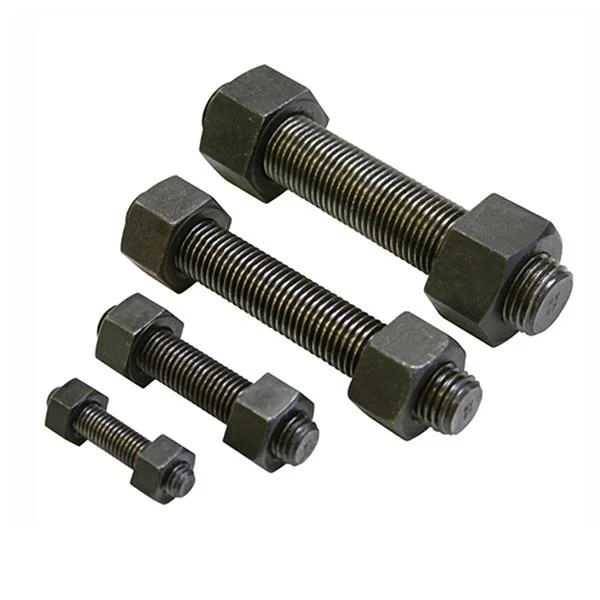Stud Bolt/ Thread Rod
Stud Bolt / Thread Rod

Bolt Standard:
Stud bolts are not defined by a specific standard, but are a specialized type of bolt used for various applications.
Material and Properties:
Carbon steel
Plain carbon steel (e.g. C10, C15, C22)
Alloy steel (e.g. 34CrMo4, 40CrMnMoS8-6) for higher strength
Stainless steel
Austenitic (e.g. A2, A4) - Excellent corrosion resistance
Martensitic (e.g. 1.4006, 1.4021) - Good corrosion resistance and strength
Bolt Design:
Stud bolt consists of a threaded rod, without a head
Threads on both ends of the stud
One end is installed into a threaded hole or component
The other end is used to attach a nut or other component
Applications:
Mounting equipment or components to a base
Attaching flanges, covers, or other parts
Connecting structures or machinery
Corrosive environments (stainless steel versions)
Coatings and Finishes:
Plain (uncoated)
Zinc plated (for mild corrosion resistance)
Hot-dip galvanized (for better corrosion resistance)
Stainless steel studs may have a passivation or polishing finish
The key features of stud bolts are their simple, headless design, with threads on both ends. This allows one end to be securely installed into a threaded hole or component, while the other end is used to attach a nut or other component. Stud bolts are commonly used for mounting equipment or components to a base, attaching flanges or covers, and connecting structures or machinery.
Stud bolts can be made from carbon steel, alloy steel, or stainless steel, depending on the strength and corrosion resistance requirements of the application. Coatings like zinc plating or hot-dip galvanization can provide additional protection against corrosion.
The selection of the appropriate stud bolt material, length, and thread size will depend on the specific requirements of the application, such as the load-bearing capacity, environmental conditions, and the dimensions of the components being connected.




